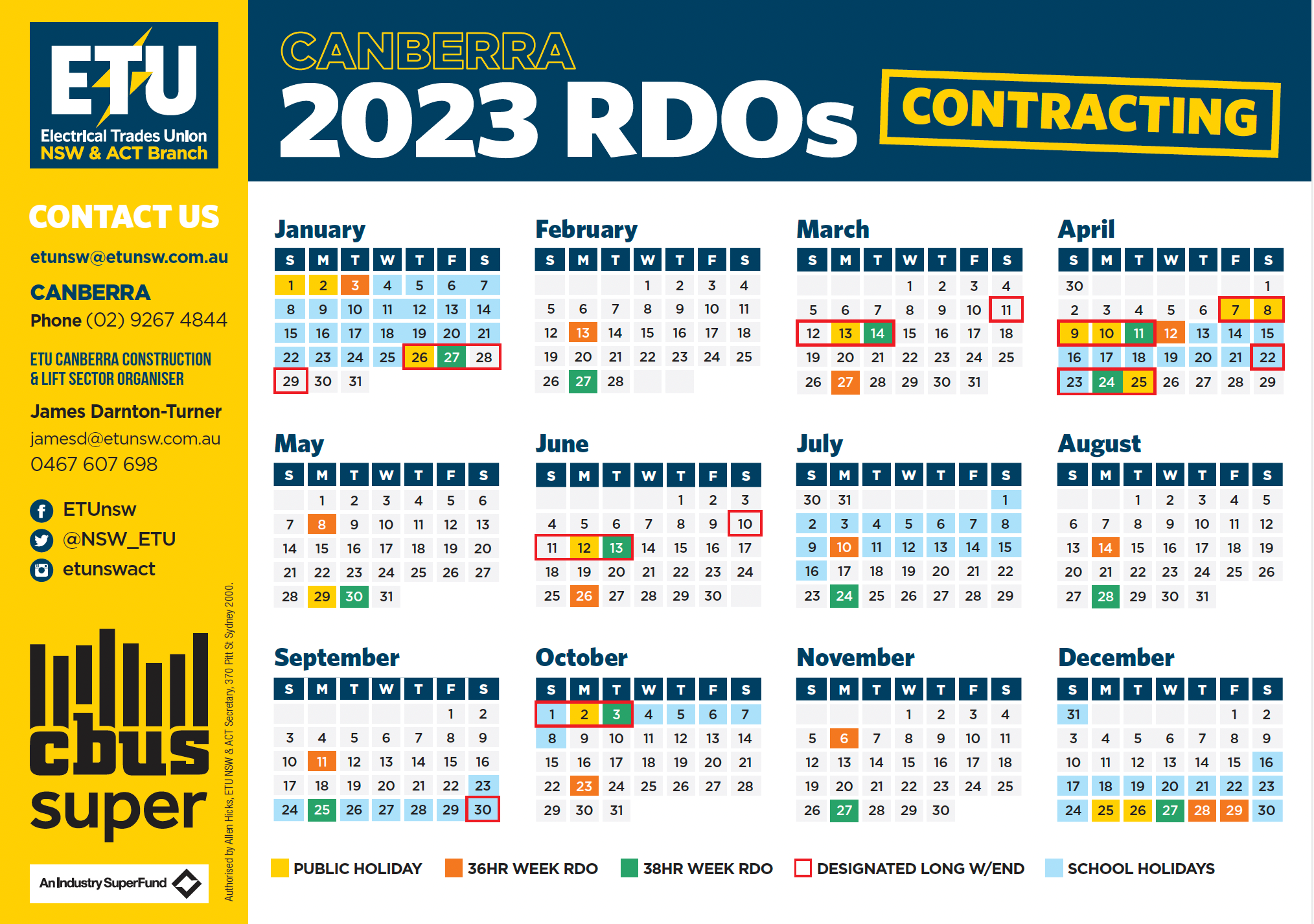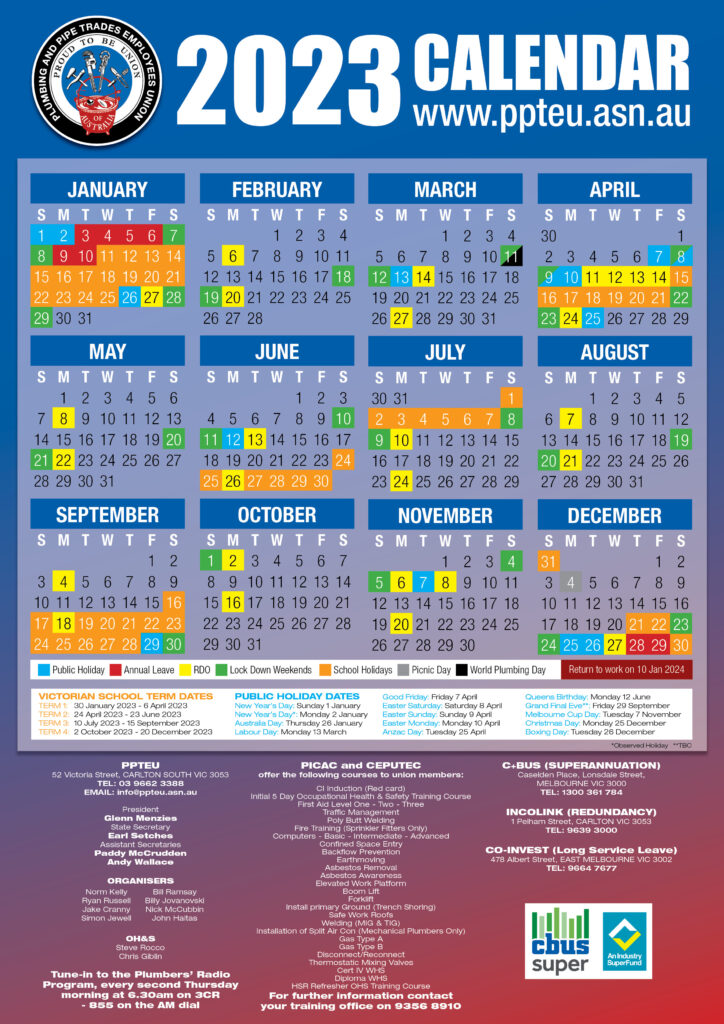
Introduction
The cfmeu calendar 2026 qld pdf represents a significant subject within its field, encompassing a range of practices, traditions, or applications that shape daily life and broader cultural or professional landscapes. For many in Queensland’s construction, mining, energy, and forestry sectors, this document is more than just a list of dates; it is a critical tool for planning, compliance, and understanding industrial entitlements. Understanding cfmeu calendar 2026 qld pdf provides clarity about its background, its present relevance, and the way it continues to influence various aspects of society, particularly within the industrial relations framework of the state. Its digital format ensures accessibility and widespread dissemination, making it an indispensable resource for workers, employers, and stakeholders alike.
Definition and Origin of the CFMEU Calendar
The Construction, Forestry, Maritime, Mining and Energy Union (CFMEU) is one of Australia’s largest and most influential trade unions, representing workers across a diverse range of heavy industries. The CFMEU calendar, specifically the 2026 Queensland PDF version, is an official document published by the union. It typically outlines key dates relevant to its members and the industries in which they operate within Queensland. This includes, but is not limited to, public holidays, rostered days off (RDOs) as stipulated by various enterprise bargaining agreements (EBAs), and other significant industrial dates or observances.
The origin of such calendars lies deep within the history of industrial relations and collective bargaining. Unions like the CFMEU negotiate with employers and employer associations to establish working conditions, wages, and entitlements for their members. These negotiations often result in EBAs that codify specific arrangements for working hours, breaks, and time off. To ensure clarity and consistency across projects and workplaces, the union compiles these agreed-upon dates into an easily digestible format – the calendar. The PDF format has become the standard for distribution due to its universal compatibility, ease of sharing, and ability to maintain formatting integrity across different devices. Its development is a direct outcome of ongoing dialogue between union representatives, workers, and industry bodies, reflecting a collaborative effort to bring structure and predictability to complex work environments.
Importance of the CFMEU Calendar Today
In the contemporary industrial landscape of Queensland, the CFMEU calendar holds immense importance for several reasons. For workers, it provides a clear and unambiguous schedule of their entitlements, particularly regarding public holidays and RDOs. This clarity is vital for personal planning, family commitments, and ensuring a healthy work-life balance. Without such a consolidated resource, individual workers might struggle to track their specific entitlements, leading to potential disputes or misunderstandings.
For employers and project managers, the calendar is an indispensable tool for operational planning and compliance. It enables accurate project scheduling, workforce management, and budgeting, particularly for large-scale construction, mining, or energy projects where adherence to strict timelines and industrial agreements is paramount. Miscalculating RDOs or public holidays can lead to significant delays, cost overruns, and potential industrial action. The calendar helps ensure that all parties are working from the same foundational understanding of the work year.
Furthermore, the calendar contributes to industrial harmony by reducing ambiguity. When entitlements are clearly laid out, the potential for disputes over working days, pay, and time off is significantly mitigated. It serves as a common reference point for union delegates, HR departments, payroll officers, and individual workers, fostering transparency and trust within the workplace. Its importance is amplified in sectors where work is often project-based, involves shift work, or spans across multiple sites, each potentially with slightly varied local agreements that need to be harmonised with overarching state-wide provisions.
Benefits of the CFMEU Calendar
The benefits derived from the CFMEU calendar are multifaceted and impact various stakeholders:
- Clarity and Certainty: It provides an unequivocal schedule of working days, public holidays, and RDOs, removing guesswork and ensuring all parties are informed.
- Improved Work-Life Balance: Workers can plan personal activities, family events, and holidays well in advance, knowing their rostered time off is clearly defined. This predictability contributes to mental well-being and reduces stress.
- Enhanced Project Planning and Management: Employers can integrate the calendar dates directly into project timelines, resource allocation, and budget forecasts, leading to more efficient and realistic planning.
- Legal and Industrial Compliance: The calendar helps ensure that employers comply with enterprise bargaining agreements, industrial awards, and relevant legislation regarding working hours and entitlements, thereby reducing the risk of penalties or legal challenges.
- Reduced Industrial Disputes: By providing a clear reference point for entitlements, the calendar significantly lowers the likelihood of disagreements and industrial action arising from misunderstandings about work schedules.
- Payroll Accuracy: Payroll departments can process wages and entitlements more accurately, factoring in public holidays, RDOs, and overtime calculations based on a universally accepted schedule.
- Safety Planning: In high-risk industries, planned breaks and RDOs are crucial for managing fatigue. The calendar supports effective safety planning by clearly outlining periods of rest.
- Standardisation Across Sites: For companies operating multiple sites within Queensland, the calendar helps standardise practices where applicable, promoting consistency in how entitlements are applied.
Applications of the CFMEU Calendar
The applications of the CFMEU calendar extend across various roles and functions within the industrial sectors of Queensland:
- Individual Workers: Utilise the document to plan personal leave, family events, and manage their finances around scheduled work and non-work days. They can cross-reference their payslips to ensure correct payment for public holidays and RDOs.
- Union Delegates and Representatives: Employ the calendar as a primary reference when advising members on their entitlements, resolving workplace disputes, or ensuring employer compliance with agreements.
- Human Resources Departments: Integrate the dates into HR policies, employee handbooks, and onboarding processes. It is essential for managing leave requests, staffing levels, and overall workforce planning.
- Project Managers and Site Supervisors: Use the calendar to develop detailed project schedules, allocate resources, and forecast completion dates. It is critical for avoiding delays caused by unexpected non-working days.
- Payroll Officers: Rely on the calendar to accurately calculate wages, overtime, public holiday pay, and RDO entitlements, ensuring compliance with EBAs and award conditions.
- Contractors and Subcontractors: Refer to the calendar when bidding for projects and scheduling their work, ensuring their proposals account for all non-working days that might impact project timelines and costs.
- Government and Regulatory Bodies: May use the calendar as a reference when investigating industrial disputes or ensuring adherence to industrial relations legislation within the state.
- Training and Education: The calendar can be used in vocational training programs to educate new entrants to the industry about standard working arrangements and entitlements.
Challenges and Future of the CFMEU Calendar
Despite its significant utility, the CFMEU calendar faces certain challenges, and its future will likely involve adaptation to evolving industrial and technological landscapes.
One challenge lies in interpretation and local variations. While the calendar provides a general framework, specific enterprise agreements or site-specific conditions might introduce nuances that require careful interpretation. This can sometimes lead to confusion or disputes if not clearly communicated. Ensuring that the calendar effectively integrates these variations or provides clear guidance for their application remains an ongoing task.
Another challenge is keeping pace with change. Industrial agreements are periodically renegotiated, public holidays can sometimes be subject to state government changes, and industry practices evolve. The process of updating and disseminating a new calendar annually, ensuring it reflects the most current agreements, requires significant coordination.
Technological integration presents both a challenge and an opportunity. While the PDF format is widely accessible, there is potential for more dynamic, interactive digital calendars that could integrate directly with project management software, personal digital calendars, or even provide real-time updates for specific sites or agreements. This could enhance usability but also introduces complexities in data management and security.
The widespread dissemination of the calendar is also crucial. While available online, ensuring all workers, particularly those in remote locations or with limited digital access, receive and understand the information remains important.
Looking to the future, the CFMEU calendar will likely continue its evolution. Increased digital integration, possibly through dedicated apps or web portals, could offer personalised calendar views based on specific EBAs or job roles. There might be a greater emphasis on dynamic updates rather than static annual releases, allowing for quicker adjustments to unforeseen changes. The core function of providing clarity and certainty will remain, but the methods of delivery and interaction are set to become more sophisticated, ensuring its continued relevance in a rapidly changing industrial environment.
FAQs about the CFMEU Calendar
Q1: What is cfmeu calendar 2026 qld pdf?
A1: The cfmeu calendar 2026 qld pdf is an official document published by the Construction, Forestry, Maritime, Mining and Energy Union (CFMEU) for Queensland. It outlines key dates for the year 2026, including public holidays, rostered days off (RDOs) as per enterprise bargaining agreements, and other important industrial dates relevant to its members and industries within Queensland.
Q2: Why is cfmeu calendar 2026 qld pdf important?
A2: The cfmeu calendar 2026 qld pdf is important because it provides clarity and certainty for workers regarding their entitlements and for employers in planning projects and ensuring compliance. It helps reduce industrial disputes, supports work-life balance for workers, and aids in accurate payroll processing and efficient project management across Queensland’s industrial sectors.
Q3: What are the main benefits of cfmeu calendar 2026 qld pdf?
A3: The main benefits include clarity on entitlements, improved work-life balance, enhanced project planning, legal and industrial compliance, reduced industrial disputes, accurate payroll processing, improved safety planning, and standardisation of practices across various worksites in Queensland.
Q4: How can cfmeu calendar 2026 qld pdf be applied in daily life?
A4: The cfmeu calendar 2026 qld pdf can be applied in daily life by individual workers for planning personal events, holidays, and family commitments around their scheduled RDOs and public holidays. Employers and project managers use it for scheduling work, managing staff, and ensuring project deadlines are met while adhering to industrial agreements.
Q5: What challenges are associated with cfmeu calendar 2026 qld pdf?
A5: Challenges include potential complexities in interpreting local variations within agreements, the need to keep the calendar updated with evolving industrial agreements and state regulations, and ensuring widespread dissemination to all relevant parties. Integrating more dynamic digital features while maintaining accessibility also presents an ongoing challenge.
Tips for the CFMEU Calendar
To maximise the utility of the CFMEU calendar, several practices are recommended:
- Understand the fundamentals. Familiarise oneself with the basic structure of the calendar, distinguishing between state-wide public holidays and specific RDOs that might apply based on particular enterprise agreements. Knowledge of what the CFMEU represents and the general principles of industrial relations in Queensland will enhance comprehension.
- Focus on practical use. Integrate the calendar dates directly into personal planning tools, project management software, or HR systems. For project managers, this means factoring RDOs into critical path analysis; for individuals, it means aligning personal appointments with scheduled time off.
- Stay updated on new trends or research. Industrial agreements are subject to negotiation and change. Regularly check for the latest version of the calendar or any supplementary notices issued by the CFMEU or employer associations. Subscribing to relevant industry newsletters or union communications can help in this regard.
- Avoid common mistakes. Do not assume that the calendar from a previous year is identical to the current one, as dates and specific arrangements can change. Always refer to the official 2026 QLD PDF version. Also, avoid misinterpreting RDOs as universal; they are often specific to certain agreements or industries.
- Adopt a long-term approach. For businesses, incorporating the calendar into strategic workforce planning and annual budgeting can lead to greater efficiency and predictability. For workers, understanding the annual cycle of RDOs allows for better long-term personal and financial planning.
Conclusion about the CFMEU Calendar
The cfmeu calendar 2026 qld pdf stands as a testament to the structured nature of industrial relations in Queensland, embodying a critical resource for clarity, compliance, and planning. Its continuing importance cannot be overstated, reinforcing its cultural, professional, and personal significance across the construction, mining, energy, and forestry sectors. For workers, it is a cornerstone of work-life balance and entitlement understanding; for employers, it is an indispensable tool for operational efficiency and legal adherence. While challenges related to interpretation, adaptation to change, and technological integration persist, the fundamental benefits provided by this document far outweigh them. The CFMEU calendar ensures that all stakeholders operate from a shared understanding of the work year, fostering stability and predictability. As industries evolve, the calendar will undoubtedly adapt, but its core role as a central element of progress and relevance in Queensland’s industrial landscape is assured for the future.







Leave a Reply